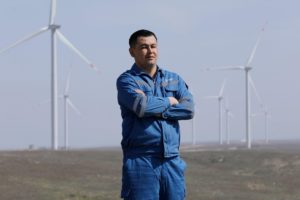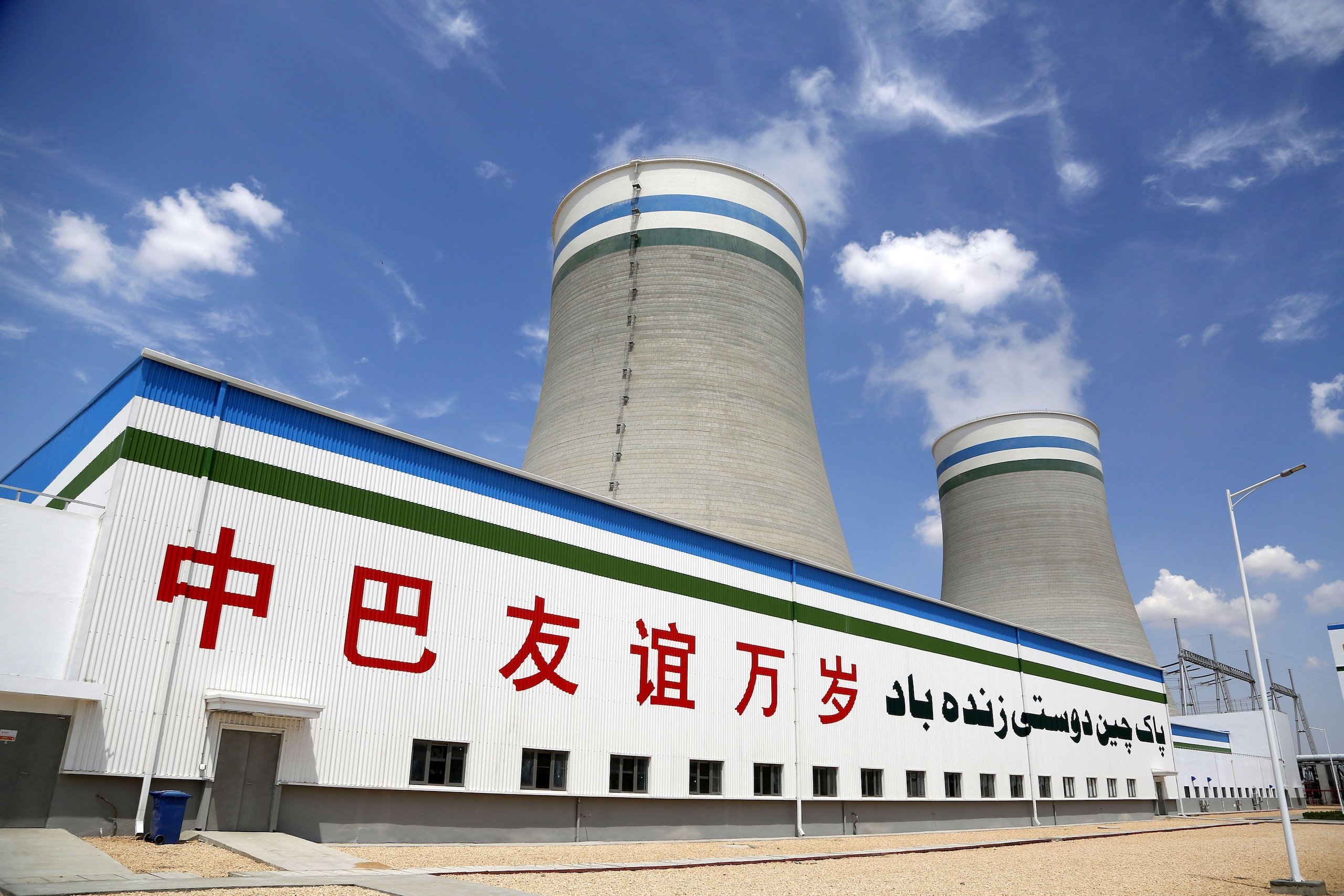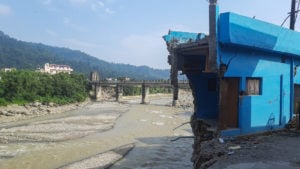Developing countries have “huge interest” in Chinese companies and institutions helping with their green energy development, experts have told China Dialogue. But there has yet to be a surge of renewable energy projects finalised under the Belt and Road Initiative (BRI), China’s global infrastructure programme, they said.
Experts spoke to China Dialogue two years after President Xi Jinping promised a shift towards greener overseas energy investments, and ahead of the BRI’s 10th anniversary this autumn.
The slow progress for renewable projects could be down to a range of factors, they explained, such as the long time it takes for deals to be negotiated, expectations realigned and strategies updated, within both China and BRI member countries.
Nevertheless, a few high-profile clean energy projects have been announced this year. They include a 123-megawatt (MW) solar farm in South Africa, to be constructed by Power China; a 50 MW wind farm in Namibia, that has received investment from a consortium led by Energy China; and a 600 MW solar farm in Saudi Arabia, being built by Energy China.
New coal-fired power projects have largely been halted, but a few projects slipped through the net because of “loopholes”, the experts added.
Ditching coal (almost)
At a UN meeting in September 2021, Xi announced that “China will step up support for other developing countries in developing green and low-carbon energy, and will not build new coal-fired power plants abroad”.
Since then, no new investments in coal power plants have been recorded under the BRI, according to the China Overseas Finance Inventory, which tracks Chinese equity and debt investments in the power-generation sector. The database is a collaborative effort between five US universities and institutes, and contains transaction details of 652 investments in 569 power plants across 87 BRI countries.
“There is huge interest in having Chinese manufacturers, developers and state-owned enterprises going out and supporting the green energy transition. This is a change,” Christoph Nedopil, an expert in green finance and the BRI, told China Dialogue.
The interest mostly comes from host countries, and partly from Chinese companies wanting to be closer to their customers and avoid potential trade restrictions, among other reasons, Nedopil said.
“Most Chinese state-owned companies and banks I know are not interested in coal projects anymore,” he added. “This was not true in 2020, where there was still a lot of talk about the need for coal.”
The shift in mindset can also be found in a lot of host countries, he noted. “The understanding is that coal is less relevant.”
Nedopil is director of the Griffith Asia Institute in Australia. When China Dialogue spoke with him, he was director of the Green Finance and Development Centre (GDFC) at Fanhai International School of Finance, part of Fudan University, in Shanghai. At the GFDC he published a series of reports analysing BRI investments.
The GFDC’s latest assessment found that China’s energy-related “engagement” – meaning construction and investment – under the BRI in the first half of 2023 was “the greenest” for any six-month period since the initiative’s launch in 2013.
The report looked at the share of renewable projects in all-energy engagement, which includes power generation and exploration of resources related to energy. It found that nearly 56% of the US$12.3 billion that China spent on energy projects during the period went into renewable sources, with 41% going into solar and wind, and 14% into hydropower.
However, some experts emphasised that not all new coal power projects have been scrapped. While Xi’s announcement was “certainly a step in the right direction”, a few projects are still moving ahead, such as a 300 MW coal power plant in Pakistan and a 1.5-gigawatt (GW) plant in Indonesia, Blake Berger, associate director at the Asia Society Policy Institute in New York, told China Dialogue.
“This is where the loopholes begin to come into play,” Berger noted. The plant on Obi, an island in eastern Indonesia, dodged the axe because it was designed as an internal facility of an industrial park, instead of a standalone coal power project. On the other hand, the project in Gwadar, in south-western Pakistan, is not considered “new” by Chinese and Pakistani officials as it was first proposed in 2016 but repeatedly delayed. China Dialogue has previously reported on both developments.
Long renegotiation processes
Although many coal power projects have been called off, there has not been a wave of renewable projects coming in to fill the space, some experts noted.
“There have been no major changes,” said Wang Xiaojun, founder of People of Asia for Climate Solutions, a Manila-based non-profit organisation. This was the case “no matter [whether] we count the number of renewable energy projects that has been signed, or China’s total overseas investments on renewable energy projects – or even the types of new renewable energy projects that were built by host countries,” Xiaojun added.
Although many thermal power projects have been halted, they have not been transformed into renewable energy projectsWang Xiaojun, founder of People of Asia for Climate Solutions
“Although many thermal power projects have been halted, they have not been transformed into renewable energy projects,” he said. “At the same time, no trend indicates that new renewable energy projects will appear in bulk.”
One possible cause for the “vacuum” – as Xiaojun put it – is the fact that Xi’s one-line pledge did not specify how coal power projects in the pipeline should be dealt with.
The issue, which remains to be explained clearly, has likely caused the Chinese government and host countries to spend a long time renegotiating those projects, Wang said. “Many previously committed coal projects might be under renegotiation to be converted into renewable energy projects,” he explained.
Other experts stated that it takes time for a government mandate to show impact on the ground. Oyintarelado Moses, data analyst for the Global China Initiative at the Boston University Global Development Policy (GDP) Center, cited the BRI itself as an example. After the initiative was introduced in 2013, it took about three years for large volumes of financing to arrive, she told China Dialogue.
The GDP Center runs a database that mostly follows the financing from China’s development finance institutions, such as the Export-Import Bank of China and the China Development Bank. The database did not record any energy projects finalised after Xi’s announcement in September 2021.
“I think we are still in that initial time lag period of [Xi’s] announcement. I do expect there to be more low-carbon and renewable energy projects from 2023,” she added.
Host countries also need time to realign their national energy strategies and make decisions on old and new projects, according to Shen Wei, director of the Green BRI Centre of the International Institute of Green Finance at the Central University of Finance and Economics in Beijing.
“A country’s energy strategy is often the result of long-[term] research and preparation by relevant government departments,” Shen told China Dialogue.
“Even though a country’s government halts its plan for an old coal power plant, researching and formulating a new plan is a very complex process and involves a lot of practical questions.” Should the project be in renewable energy, questions might include the type, location, and capacity, Shen said.
Other challenges include the lack of “supportive infrastructure” in some countries, particularly reliable power grids that can take in renewable power – which can be unpredictable and unstable – while still running safely, according to Shen.
The push for ‘small but beautiful’ projects
Renewable energy projects are often much smaller in scale than coal power plants. This means that Chinese energy investors, banks and developers need to apply new business logic and approaches to them.
Chinese state-owned banks are “having to learn how to structure new deals that are focused on renewable energy projects”, said Moses.
China has prompted state-owned enterprises, particularly those directly run by the central government, to adjust their strategies. In February, Zhao Shitang, deputy director of the State-owned Assets Supervision and Administration Commission of the State Council, instructed central-level state-owned enterprises to “incubate a batch of ‘small but beautiful’ projects with good economic and social benefits” under the BRI, with a focus on areas such as green, health and digital.
That was the first time the phrase “small but beautiful” had appeared in the narrative of the BRI, according to Xiaojun, who described the instruction as “a very good change”.
“‘Small but beautiful’ renewable energy projects, such as distributed, flexible and off-grid projects, can meet the energy demands of host countries and provide a huge stage for Chinese private companies,” Xiaojun commented. “This should be the future direction of energy investments for China under the BRI.”
He called for more government backing for Chinese private companies to help them “play to their full strength … Whether it is policy or financial support, I hope the government can enable private companies to invest in energy projects faster and more flexibly overseas.”
Turning to renewable projects also brings the Chinese into a more competitive investment space, said Nedopil. Previously, China, Japan and Korea were more or less the only providers of technology and public financing for overseas coal power plants.
“If you work on renewable energy, there are a lot more potential investors and technology providers, not only from China, but other countries as well,” he said.
‘Traffic light system’
Several Chinese and international organisations have published useful tools for evaluating the environmental impacts of BRI projects and guiding Chinese companies to invest in more sustainable ways.
One of them is the Green Development Guidance for BRI projects, a collaborative research effort launched in 2019, two years before Xi’s announcement on ending support for new coal overseas.
The series of studies is being led by the Belt and Road Initiative International Green Development Coalition, which was initiated by the Ministry of Ecology and Environment and comprises more than 40 companies, associations, thinktanks and non-governmental organisations from China and around the world.
The guidance is also known as the “traffic light system” because it assesses BRI projects using colour-coded labels, based on their impacts on climate, ecology and the environment. Green stands for projects that should be encouraged, yellow indicates neutral ones, and red those that require stricter supervision and regulation.
🟢 Green projects are encouraged. These BRI investments are considered to have no significant negative impact on pollution, climate change or biodiversity, and contribute positively to at least one of these, particularly if they benefit the aims of international environmental treaties and conventions. Examples include the development and use of renewable energy.
🟡 Yellow projects are environment-neutral with moderate impacts. These cause no significant harm, and remaining harms can be mitigated by affordable and practical measures, on a reasonable scale, within the project itself. Examples include waste-to-energy projects and urban freight transportation with emission standards above Euro IV/national IV standards.
🔴 Red projects require stricter supervision and regulation. These are regarded as creating “significant and irreversible environmental harm” in at least one of the areas of climate change, pollution and biodiversity, or the risk of such harm. Examples include coal-fired power, hydropower, petrochemical, and mining and metal smelting projects.
The first phase of this effort, which was published in December 2020, red-flagged coal-fired power projects, explained Wang Ye, an associate of the Finance Center and China Sustainable Investment Program at the World Resources Institute (WRI) China, which co-leads the project. This red flagging supported policy guidance “towards transformative development in China’s overseas energy investments on stopping building [of] new coal power plants overseas,” said Ye.
In the third report of the project, published in May, researchers analysed the role of foreign investment cooperation funds in greening the BRI. These are official funds established by China to meet the financing needs for sustainable development in developing countries. Examples include the China-ASEAN Investment Cooperation Fund, China-Africa Development Fund, and China-Latin America and the Caribbean Cooperation Fund.
“All three funds primarily invest in energy, infrastructure construction and manufacturing capacity, sectors [that are] key to the green transition,” noted Ye.
She underscored the importance of such funds: “How they evaluate projects and manage clients are crucial for aligning investment decisions with local needs, concretising their commitment to sustainability, and shifting financing to green projects.”
Asia Society, a non-profit organisation with offices in the US, Asia, Oceania and Europe, has developed a digital “toolkit” to help local communities and companies involved in the BRI ensure that their projects are “mutually beneficial, equitable, inclusive, and environmentally and socially sustainable”.
Available in five languages – English, Mandarin, Khmer, Lao and Bahasa Indonesia – the toolkit focuses on two “critical aspects”: how to undertake environmental and social impact assessments, and how to ensure engagement from stakeholders throughout the project.
“We designed the toolkit to empower local communities with information to better safeguard and defend their own interest, and to help companies involved in these projects undertake these critical aspects of due diligence in a more systematic way,” Berger, of Asia Society, said.
“We found that even minor adjustments in how projects are undertaken can have a sizeable impact on long-term sustainability of the project and receptiveness of the local population,” he added.
How to go further
Looking into the near future, experts listed several types of renewable projects they wanted to see more of under the BRI.
“One is the local manufacturing of goods related to energy transition,” said Nedopil. His report found that there were not many engagements in the manufacturing of equipment needed for green energy transition under the BRI. “I do hope to see more of these engagements – for example, the manufacturing of solar panels.”
Nedopil also hoped to see China step up its support for BRI countries by improving their power grids and helping their existing coal plants retire early.
Xiaojun underlined the importance of a growth in “capacity building” in BRI countries by Chinese companies, such as facilitating technological transfer and relocating some of their renewable supply chains there.
In his view, these moves “can help Chinese companies mitigate some potential supply chain risks, as well as nurture the host countries’ labour market and create electricity demand”.
Training local talent is even more important, he pointed out.
“For the construction of BRI power projects, Chinese companies usually bring their own workers, including technicians, from home.” But moving forward, Chinese companies can train workforces locally, while Chinese universities can also offer electricity and renewable courses for young people from BRI countries, Xiaojun said.
“These practices can truly transform a country: to stop it being a climate victim and help it become a climate victor,” he concluded.











